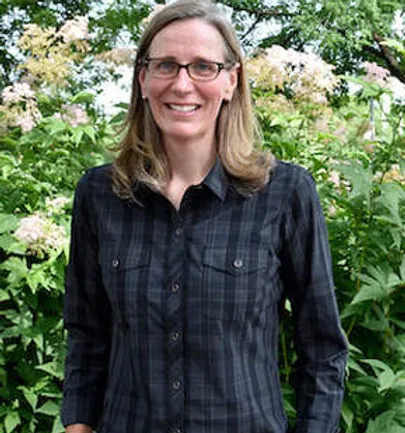
Heather Holm didn’t plan on becoming an award-winning expert on bees and wasps, but her training as a botanist and working with plants that rely on pollinators to survive made the journey to bee and wasp expert almost inevitable.
“I always had an interest in insects, but my training is more in plant-related science, and I just became extremely curious about all the different pollinators,” Holm said. “That sent me down the rabbit hole, and I’ve never come out.”
Holm is the speaker at this week’s Bird, Tree & Garden Club Brown Bag Lecture, set for 12:15 p.m. today in Smith Wilkes Hall. Her lecture, called “Bumblebee Banquet,” will explore the relationship between the 18 bumblebee species in New York and the plants they get their food from.
Holm has written three books about pollinators: Pollinators of Native Plants in 2014; Bees in 2017; and Wasps in 2022. Between Bees and Wasps, she’s won 13 awards for non-fiction, scientific and environmental writing. Her lecture will draw from the extensive knowledge she gained about pollinators while writing these books, as well as her earlier work as a botanist.
Holm is also aware of the somewhat shaky reputation bees, wasps and other pollinators have gained due to their stingers, and the painful result of an encounter with the wrong end of a backyard wasp or a poolside bee. While she understands where people’s fears come from, she says that the vast majority of pollinators will never sting anyone.
“There’s just a small minority of bees and wasps that have a social nest, and they have a tendency to want to defend that nest. Those are the insects that people get stung by,” she explained. “Ninety-five percent of the other bees and wasps out there in the world, hanging out with us, don’t really cause people any harm or pose a threat. So we’ve got a few bad actors that give all insects a bad name.”
Even the pollinators that humans do have negative run-ins with, getting stung on a walk or swarmed at a picnic, still play a vital role in every ecosystem, she said. But the pollinators that come to mind for most people when they think about bees, wasps and the importance of protecting them perhaps aren’t the animals that should be receiving the most attention.
Holm said that much of the push to protect bees began with the sudden emergence of colony collapse disorder in the past two decades. Colony collapse disorder, she explained, affects honeybees, a non-native, domesticated species used to produce honey en masse. And while colony collapse disorder is a problem that needs solving, honeybees are not at risk of extinction any time soon.
“A lot of the media attention and focus has been on (honeybees),” she said. “That’s drawn a lot of attention away from the wild or native bees that are really in trouble and need our help through conservation efforts.”
That is why Holm wants her lecture to focus on bumblebees; they’re native to New York, and there are tangible things that Chautauquans can do to help preserve their population. Holm explained that the simple act of planting more native flowers in one’s garden can draw in more bumblebees, and creating more habitats for bumblebees can help ensure their long term survival.
“Quite literally, if you plant it, they will come,” she said. “The more flowering plants that we can get back into the landscape, whether it’s urban, suburban, (or) rural, will ultimately help pollinators.”




